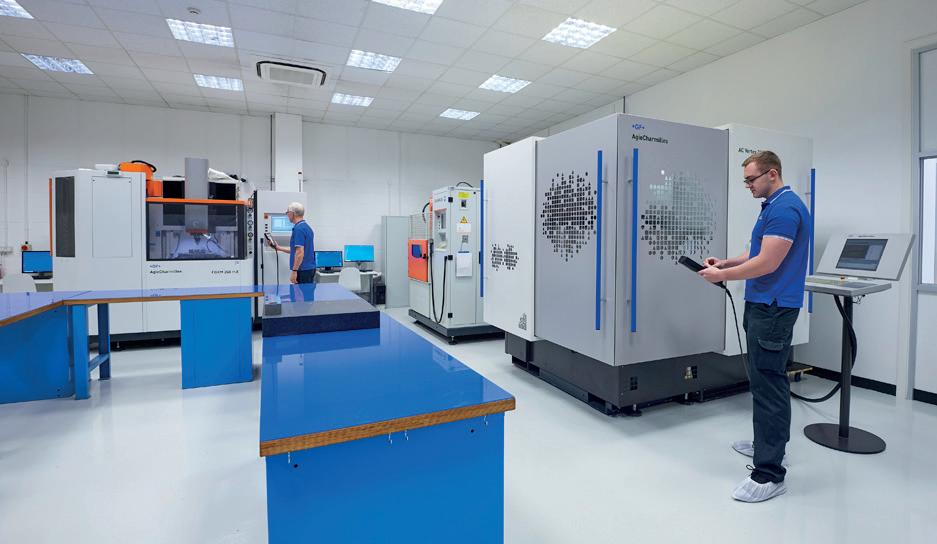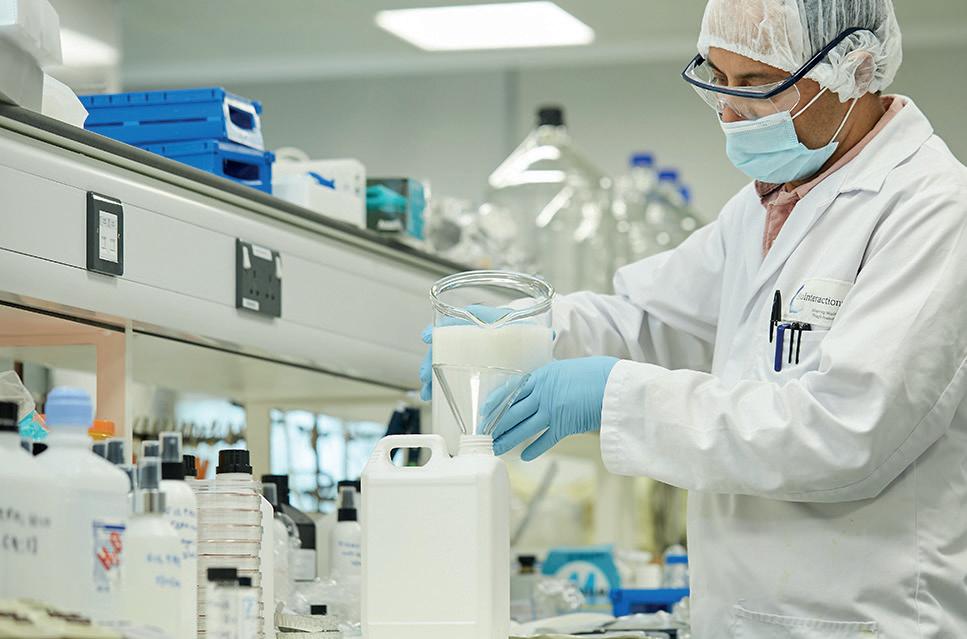
3 minute read
What is the future of wearable health monitoring?
Xi Engineering examines the challenges in advancing wearable health monitoring
Wearable sensors are widely used in everyday life in fields such as sports performance tracking and healthcare.
According to IDTechEx data, the rapid growth saw the market attain approximately $79 billion in 2020.
Smartwatch Capabilities
The latest smartwatches available can track and update the user with health-relevant data such as heart rate, steps taken, blood oxygen levels, and more. Although physiological tracking methods are continuously improving and expanding, the measurement methods only use a core set of sensors including motion sensors, vital sign sensors, and location trackers. Many metrics provided by these sensors tend to be estimates calculated using measured data and personal information input by the user.
Primarily implemented for fitness tracking, state-of-theart in commercial wearable sensing remains limited when accurately monitoring health conditions and collecting useful medical data. Currently, smart watches provide basic cardiovascular health data –measured using a simplified, single-lead ECG system.
Smart Sensing With Noninvasive Biofluids
Advancing wearable, continuous health monitoring requires expanding the physiological information to be measured. Extensive research has been targeted at developing wearable systems that can continuously and non-invasively monitor healthrelevant molecules. Examples of these molecules include glucose, electrolytes, ethanol, and cortisol.
The third wave of biochemical sensing encompasses devices that enable the user to “wear the lab” – providing a platform to measure concentrations of molecules in the biofluid and correlate these concentrations to health conditions in real-time. Non-invasive biofluids (such as sweat, tears, and saliva) are rich in physiological information and have been analysed using several prototype sensors in research literature including wristbands, headbands, adhesive patches and more.
MOLECULAR MONITORING: OUTLOOK AND CHALLENGES
Despite advancements, currently no wearable sweat sensors are available on the market. With the recent positivity and interest surrounding non-invasive molecular monitoring, what obstacles are seemingly restricting these sensors from advancing?
Blood analyte correlation
Hypothetically, the perfectly engineered sensor could be developed but without providing context on how the measured concentrations relate to corresponding blood levels, the data is far less useful for health monitoring.
So far, certain components in sweat (e.g. K+, lactate) have shown to have no correlation to their levels in blood. The only analyte verified to date using simultaneous sweat and blood measurements for 100% correlation has been ethanol. This area requires further understanding.
Calibration
All sensors need to be calibrated to ensure accuracy and reliability. Sensors using blood samples for health diagnostics require simple calibration as the pH and temperature of blood are well regulated by the body. Sweat, however, has a pH that can range between 4 – 7 which can vary depending on skin temperature. For sensors that use enzymes as the recognition element (e.g. glucose), the performance of the enzyme changes depending on the pH and temperature of the environment. Additionally, concentrations of analytes will vary in non-invasive biofluids depending on the secretion rate.
While sensors that use blood can be calibrated beforehand and then used with high reliability, devices that use noninvasive biofluids will require a sensor array including pH, temperature, and secretion rate sensors for real-time, continuous calibration.
Biofluid sampling
Health monitoring with blood and interstitial fluid require access below the skin and use needles for collection. Non-invasive biofluids need more innovative sampling approaches as they have lower volumes, may be contaminated by the external environment, and vary in their availability. For example, saliva and tear fluid sampling will be affected by the dryness of the mouth or eyes.
To address this, recent research has focused on reliable sweat sampling techniques. Iontophoresis is one implemented technique that uses an electrical current, which travels through the skin, to deliver an agonist (e.g. pilocarpine) to stimulate localised sweating on-demand. Another method, typically accompanying iontophoresis devices, is using microfluidic channels to provide a controlled sweat delivery rate to the sensor array. These channels have an inlet for newly secreted sweat and an outlet for the measured sweat, ensuring old samples do not affect subsequent measurements.
While much of this research is promising, further development is needed to ensure these mechanisms can be used continuously over a long period without significant decrease in device performance.
Reliability
Current smart watches and wearables tend to estimate sports performance and health data based on a combination of the user’s personal information and data collected from basic motion and vital sign sensors. While this is acceptable for “ballpark” figures used in fitness tracking, data must be accurate for medical use. This becomes challenging for molecular monitoring using non-invasive biofluids due to the complexity and patient-specificity of measurements.
Due to complexity, physical device manufacture and testing can become expensive and time-consuming. Computational modelling, while not a replacement, can reduce development time and costs. Correlation of modelling results with existing experimental data can give confidence in the fundamentals of a baseline model and help accelerate new design iterations.










